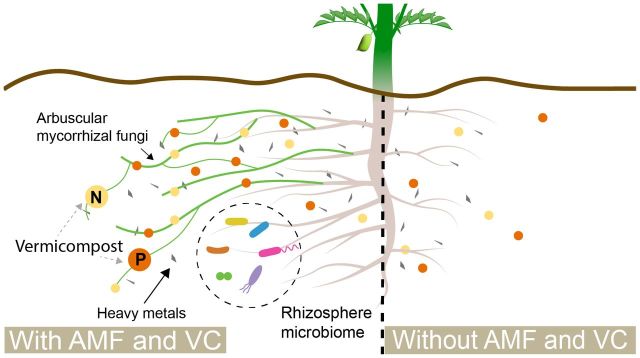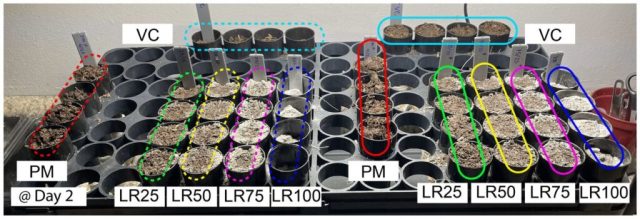American scientists have conducted a number of experiments on chickpea cultivation in a simulation of lunar regolith using fertilizers and arbuscular mycorrhiza. The results showed that the mixture helps the plants to bloom, however, chlorophyll deficiency was observed in all samples.
There are not enough technological ships to conquer space. In order to successfully colonize other planets, humans need to learn how to produce resources off-Earth, because resupply from their home planet is likely to be unprofitable and difficult. Plants in space can become a source of oxygen and nutrition for astronauts, thereby reducing the waste of food reserves and increasing the duration of flights.
Naked Science told us that it is difficult to grow watercress in the lunar soil, but the addition of some strains of soil bacteria significantly increases the yield of crops grown in the lunar regolith.
A new study published on the bioRxiv website has shown that mutton chickpeas (Cicer arietinum), cultivated in a lunar regolith simulation, successfully survives for two weeks. This result was achieved thanks to the regeneration of the soil with arbuscular mycorrhizal fungi and fertilizers.
Lunar regolith does not retain water well, it lacks the soil microbiome necessary for the processing of nutrients and nitrogen fixation, without which plants cannot really develop. In experiments with simulations of Martian and lunar soils, the former always won by a wide margin. Because of this, the germination rate in such an environment is much lower than, for example, in the Martian regolith.
To use lunar soil for growing crops, it needs to be fertilized — similar experiments are carried out on simulations of lunar regolith (LRS), repeating the geochemistry, mineralogy and particle size of the original soil. American researchers decided to improve the properties of the lunar soil with the help of arbuscular mycorrhiza and vermicompost (VC), a fertilizer rich in nutrients, minerals and microbiome.
Arbuscular fungi reduce the bioavailability of heavy metals, preventing their absorption by the host plant. In addition, they produce glomalin, a glycoprotein that binds mineral particles together and makes the soil more stable.
 |
| Weeks 6, 9 and 11. In week 7, pins were added to support the shoots. All plants in the LRC100 died during vegetative growth. The scale line is 5 centimeters. |
| Source: Jessica A. Atkin et al |
The researchers conducted experiments with chickpea cultivation on LRS for 120 days and at a temperature of about 23 degrees Celsius. Chickpeas were grown in eight containers: one half was treated with arubular mushrooms, the other half was not. The samples were mixed with vermicompost in different proportions: 25% VK + 75% LRS / 50% VK + 50% LRS / 75% VK + 25% LRS / 100% LRS.
In the first week, scientists observed soil compaction, and on the 16th day all the seeds germinated. An increase in the composition of LRS correlated with increased signs of stress — the sample without vermicompost showed the highest growth at the germination stage. Past studies have indicated that this behavior leads to early aging of the plant. The researchers explained this as a reaction to stress.
By the tenth week, the group not treated with mycorrhiza began to wither, and the treated group began to bloom. This chickpeas lived on average two weeks longer than plants where the concentration of LRS was 100% (they aged). The full maturity of the crops came after 120 days instead of the usual 100. However, all plants showed signs of chlorophyll deficiency. The result, as noted by the scientists, suggests that additives of arbuscular mycorrhiza and a mixture of lunar soil with fertilizer can help improve the suitability of lunar regolith for plant growth.
"The novelty of using vermiculture is that it can all be done in space, on a space station or on the Moon, which reduces the need for resupply missions," said Jessica A. Atkin, author of the article.


